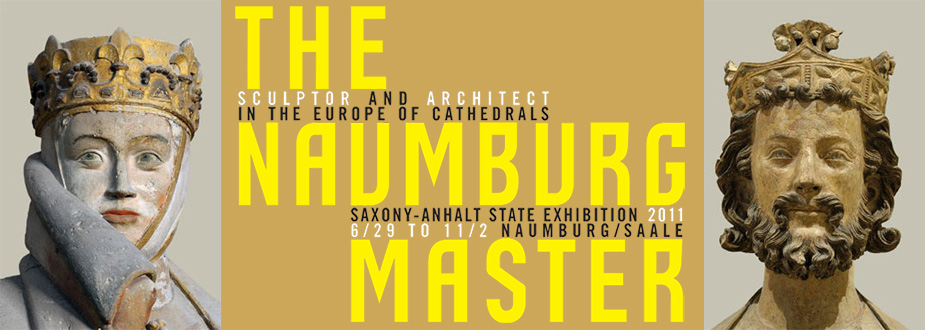Cathedral of St. Peter und St. Paul
The Naumburg Cathedral of St. Peter and St.Paul ranks as one of the most important sacred cultural monuments from the time of the European High Middle Ages. Together with the cloisters, the chapel of the Three Kings, the Church of St. Mary and the surrounding canons’ houses, the impressive building with its four towers creates a magnificent architectural ensemble.
The history of Naumburg Cathedral begins in 1028 with the transfer of the Bishop’s seat to Naumburg from Zeitz, which was founded by Emperor Otto the Great in 968. With the exception of a few remaining remnants of several walls, little is left of the 11th century cathedral. Sources indicate comprehensive building work on the cloisters and the cathedral church from 1211-1212 at which time the decision was made for an ambitious rebuilding of the cathedral. By the time of the death of Bishop Engelhard II in 1242, the crypt, the east choir, the transept, nave and the ground floor of the two west towers had been completed.
What can the visitor expect?
The new cathedral, which was built following a devastating fire in 1211, reflects the confidence and the tradition of both the most important French archbishopric and the ambitious royal dynasty.
New forms in sculpture and architecture are witnesses to the innovative power that spread out from the most influential cathedral building site of the time. Masks and tracery are the main elements for the individualization of the sculpture and the artistic sophistication of the building. From the beginning, architecture and sculpture were integrated in a hitherto unknown way – the origins of the “sculptor/architect” began here.
The building of Reims Cathedral was a magnet for stonemasons, architects and craftsmen from all over Europe. Owing to the rapidity of construction and the gigantic size of the undertaking, there was a high turnover of highly specialized workers. The groups of workers who moved from Reims spread the new knowledge of architecture, sculpture and logistics throughout most of the Christian countries within a very short time. Using prominent originals and copies, the exhibition indicates the triumphal procession of this new style in Strasbourg, Trier, Bamberg and Magdeburg. And, the artistic and architectural sources which inspired the Naumburg Master are also a central theme of the exhibition.
